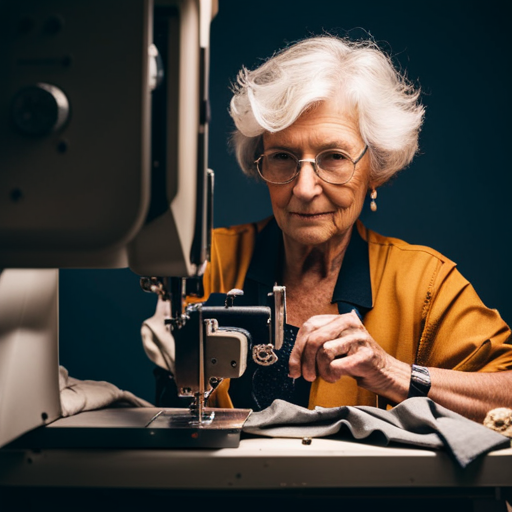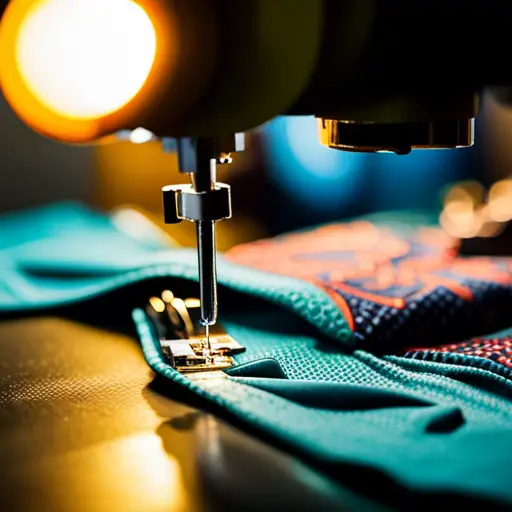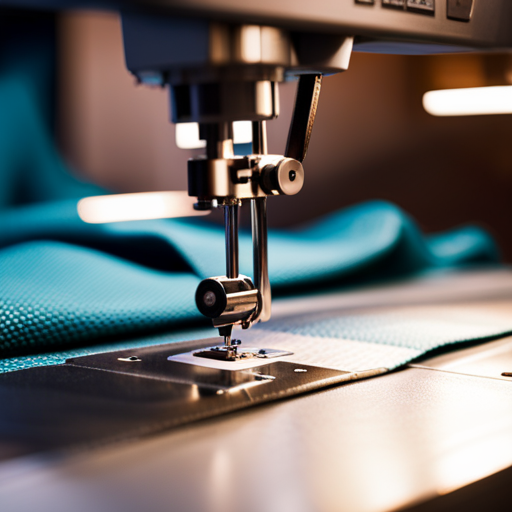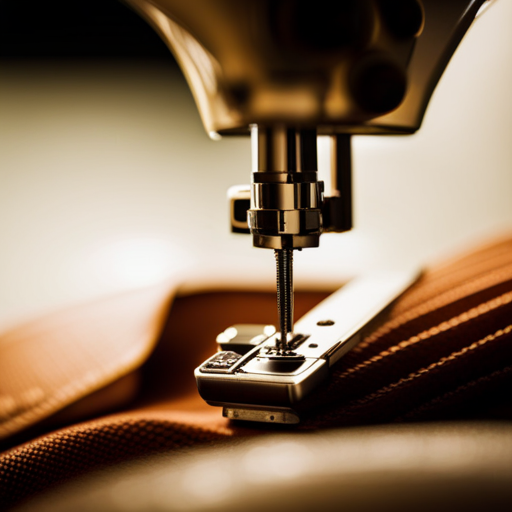Sewing Machine Techniques for Upcycling Clothes

Unlock the potential of your sewing machine to breathe new life into old garments with our comprehensive guide to upcycling techniques.
From transforming worn-out jeans into stylish patchwork skirts to adding intricate embellishments to plain t-shirts, this article will equip you with the skills and knowledge to elevate your clothing creations.
Discover the art of sustainable fashion and unleash your creativity as we delve into essential sewing machine techniques for upcycling clothes.
Choosing the Right Materials for Upcycling
To upcycle clothes effectively, it is essential to select high-quality materials that align with the desired aesthetic and functionality of the final garment. When choosing sustainable fabrics for upcycling, it’s important to consider materials like organic cotton, linen, hemp, and bamboo, as these are renewable and have a lower environmental impact. These fabrics are not only durable but also biodegradable, making them an ideal choice for upcycling projects.
In addition to selecting sustainable fabrics, fabric dyeing techniques play a crucial role in the upcycling process. Opting for natural or eco-friendly dyes can further enhance the sustainability of the upcycled garment. Techniques such as plant-based dyeing, which utilizes materials like avocado pits, onion skins, and turmeric, can create unique and beautiful colors while minimizing the use of harsh chemicals.
When considering the environmental impact of upcycling, choosing sustainable fabrics and employing eco-friendly dyeing techniques are essential steps in creating clothing that is not only stylish and functional but also environmentally responsible.
Essential Sewing Machine Stitches for Upcycling
The essential sewing machine stitches for upcycling clothes play a pivotal role in transforming garments into new, stylish creations. When upcycling clothes, mastering essential sewing machine stitches is crucial for achieving professional-looking results.
Here are four essential stitching techniques for upcycling:
-
Seam Finishing: Utilize various seam finishing techniques such as zigzag stitches, overcasting, or serging to prevent fraying and ensure the longevity of the upcycled garment.
-
Decorative Stitches: Experiment with decorative stitches to add unique and personalized touches to upcycled clothes, elevating their aesthetic appeal.
-
Fabric Manipulation: Incorporate fabric manipulation techniques like pintucks, smocking, or pleating to breathe new life into old garments, creating texture and visual interest.
-
Reverse Appliqué: Explore the art of reverse appliqué to creatively conceal stains or imperfections on clothing, giving them a fresh and trendy look.
Mastering these essential sewing machine stitches equips upcyclers with the necessary skills to revamp and rejuvenate old clothing, minimizing waste and promoting sustainability.
Transitioning into the subsequent section about ‘creative patchwork and embellishment techniques’, upcyclers can further elevate their creations by incorporating innovative patchwork and embellishment methods.
Creative Patchwork and Embellishment Techniques
Upcycling clothes through the use of creative patchwork and embellishment techniques enhances the garments’ visual appeal and individuality. Patchwork designs offer a unique way to breathe new life into old garments. Utilizing various fabric scraps, old clothing, or even repurposed materials, patchwork designs can be tailored to suit individual tastes and styles. From traditional quilt-inspired patterns to more modern, eclectic designs, the possibilities for patchwork are endless.
When it comes to embellishment inspiration, consider adding intricate embroidery, beading, or appliqué to transform plain garments into one-of-a-kind pieces. Drawing inspiration from different cultures, nature, or even personal experiences can ignite creativity and lend a distinct character to upcycled clothing. Furthermore, incorporating elements such as lace, ribbons, or sequins can add texture and depth to the overall look.
Alteration and Reconstruction Methods
When considering alteration and reconstruction methods for upcycling clothes, it is essential to assess the garment’s existing structure and envision the desired transformation. To effectively alter and reconstruct garments for upcycling, consider the following tips:
-
Assessing Fit: Evaluate the fit of the garment and identify areas that require adjustment. Common alterations include taking in or letting out seams, adjusting hemlines, and reshaping sleeves.
-
Incorporating Fabric Panels: Integrate fabric panels from other garments or fabric scraps to add length, width, or design details. This technique can breathe new life into old clothing items.
-
Reworking Necklines and Silhouettes: Experiment with reshaping necklines or changing the silhouette of the garment to create a fresh look. This can involve converting a regular neckline into a boat neck or transforming a dress into a top and skirt combination.
-
Embellishing with Trims and Accents: Utilize trims, lace, or appliqués to enhance the visual appeal of the garment, adding a unique touch to the upcycled piece.
When these alteration and reconstruction methods are applied thoughtfully, they can breathe new life into old garments, transforming them into stylish, one-of-a-kind pieces.
This sets the stage for the subsequent section about ‘finishing touches and detailing for upcycled garments’.
Finishing Touches and Detailing for Upcycled Garments
To achieve a polished and refined look for upcycled garments, meticulous attention to finishing touches and detailing is essential. Fabric manipulation techniques such as pleating, smocking, or ruching can add texture and dimension to the garment, elevating its visual appeal.
Incorporating decorative trims, such as lace, ribbons, or fringe, can provide a unique and personalized touch to the upcycled piece. Hand-sewn accents, such as carefully placed beads, sequins, or hand-stitched appliqués, can further enhance the garment’s overall aesthetic. Personalized embroidery is another way to add a bespoke element to upcycled clothing, allowing for the addition of meaningful symbols, monograms, or intricate designs.
These detailing methods not only contribute to the individuality of the garment but also serve as sustainable and creative ways to breathe new life into old textiles. By paying close attention to these finishing touches, upcycled garments can be transformed into one-of-a-kind pieces that reflect both creativity and conscientiousness.
Frequently Asked Questions
How Can I Incorporate Sustainable Sewing Techniques Into My Upcycling Projects?
Incorporating sustainable sewing techniques into upcycling projects involves using eco-friendly materials, ethical sewing practices, and embracing the slow fashion movement. Zero waste sewing techniques can minimize environmental impact and promote sustainable fashion.
Are There Any Special Considerations for Upcycling Different Types of Fabrics, Such as Denim or Silk?
When upcycling different types of fabrics, such as denim and silk, special considerations are crucial. Each fabric requires unique handling and sewing techniques to ensure the best results. Understanding the characteristics of each fabric is essential for successful upcycling.
What Are Some Advanced Sewing Machine Techniques That Can Take My Upcycling Projects to the Next Level?
Advanced sewing machine techniques can elevate upcycling projects. Utilize diverse embroidery techniques and fabric manipulation for unique designs. Incorporate embellishment methods like appliqué and beading to add depth and visual interest to repurposed garments.
Can You Provide Tips for Creating a Cohesive and Polished Look When Combining Different Fabric Patterns and Textures in Upcycled Garments?
When combining different fabric patterns and textures in upcycled garments, achieving a cohesive and polished look requires thoughtful consideration. Mixing patterns and texture combinations can elevate the design, creating a harmonious and refined finish.
Are There Any Specific Tools or Accessories That Are Essential for Upcycling Clothes With a Sewing Machine?
Essential tools and upcycling accessories are vital for successful upcycling with a sewing machine. These include quality scissors, seam rippers, fabric markers, and specialty presser feet. Investing in these upcycling essentials ensures precision and efficiency.
Conclusion
In conclusion, upcycling clothes using sewing machine techniques requires careful consideration of materials, mastering essential stitches, and creative patchwork and embellishment.
Alteration and reconstruction methods play a key role in transforming old garments into new pieces, while finishing touches and detailing add a unique touch to the upcycled items.
According to a recent study, the global upcycling market is projected to reach $3.12 billion by 2025, indicating a growing interest in sustainable fashion practices.






